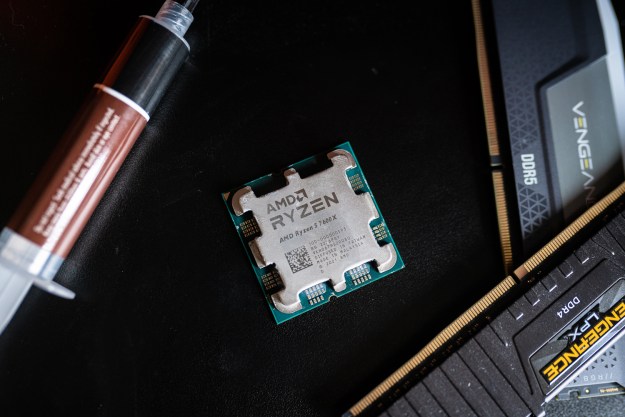In a patent filing released on Thursday, June 7, Nvidia describes a technology that could fundamentally alter the way games look, feel, and perform. Nvidia calls it “infinite resolution,” and it’s effectively a clever way of using vector graphics to replace static textures in games. Let’s dive into what that means and why it could be a big deal.
Today, most games use textures that are created for a set of fairly standard resolutions, 720p, 1080p, 1440p, 4K — and some in-between. These textures cover just about every surface in modern PC games, from character models, to weapons, to environments, every 3D model is effectively “wrapped” with a 2D texture. Nvidia filed a patent to change how these textures are rendered.
Currently, developers package games with a series of these textures, one for each resolution the game runs at, and one for each detail setting at each resolution. This requires a lot of storage space, and it means that today’s games have a ceiling or a maximum resolution.
To see what we mean, try opening up Diablo 2 on a modern computer. Your resolution in that game is going to max out somewhere around 1024 x 768, way below what current monitors are capable of. As a result, it’s not going to look its best. The game is going to stretch those old under-sized textures across your whole display, like when you zoom in really far on a small picture.
Nvidia’s solution would fix these issues. Instead of packaging games with a massive set of static textures, games built using Nvidia’s technology would include only a single set of texture information, not the actual textures themselves. Effectively, each in-game texture would be drawn in real time from instructions the developers include in the game. Your computer would use its processing and graphics rendering horsepower to do the heavy lifting here.
Because your computer would be drawing each texture in real time, your games would be future-proofed to some extent. If a game like Diablo 2 was built using this technology, that would mean playing the game on a massive 8K monitor would look just as tack-sharp and detailed as it would on an old 800 x 600 CRT monitor.
This technology isn’t actually anything new, it’s just a novel application of an existing technology: Vector graphics. If you’re unfamiliar, vector graphics are used for a variety of purposes, but most notably they’re used in graphic design. When a designer creates a logo or design with vector art, that logo or design can be blown up or shrunk down to any size without losing detail. Nvidia’s patent filing here simply applies these principles to textures in PC games.
It’s unclear what potential speed bumps this technology might encounter, how it might bog down a typical gaming PC, or whether it would only be useful for certain types of games, but it’s an interesting concept and we’re excited to see where it could lead. To be clear, Nvidia has been working on this for quite a while, but this latest patent filing suggests the company could be close to bringing it to market.
Editors' Recommendations
- These are the PC upgrades that will have the biggest impact on performance
- This Miyazaki-inspired survival game lets you heal the environment
- Helldivers 2 just got some long-requested changes in its new patch
- Sony is convinced the PS4 somehow made PC gaming better
- Snag Starfield and Lies of P for free with these AMD GPUs



